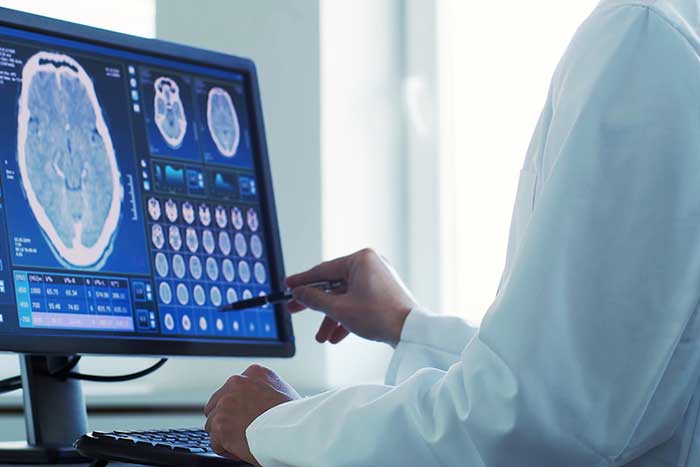Modern technology is an integral part of our day-to-day life and influences our transportation, communication, and business systems. We often think less of the function technology plays as a life-saving presence in modern medicine.

In the current pandemic climate, medical advancement and technology used in saving lives for common ailments and diseases can be superseded and overlooked. Behind the scenes, innovative treatments, surgical technologies, new drug therapies, and medical advancements continue to enhance the life-saving potential of medical treatment across the field of modern medicine.
Cancer Treatments
Cancer diagnosis and treatment has—historically—been invasive in nature, and new technologies seek to remedy this while providing laser-focused accuracy. The patient’s pain management and overall comfort is progressively improved by technologies that prove safe and effective while eliminating unnecessary risk.
MelaFind, a tool used in diagnosing Melanoma, eliminates the need for painful biopsy and provides thorough, accurate information to the physician. Targeting cancerous masses and cells without disturbing the surrounding tissue has been realized in the Gamma Knife, a high-dose radiation beam that concentrates radiation in a specific area. Digital Tomosynthesis mammography creates a 3D rendering of the breast to give physicians an accurate image of any cancerous concerns when tracking and diagnosing breast cancer.
Artificial Organs
At any given time, thousands upon thousands of patients are waiting for an organ transplant, attempting to beat the clock in their bid to live. The innovation of artificial organs has facilitated treatment without the long waits for a perfect match, and the technology continues to advance in exceptional ways.
Tissue engineering is a science focused on using living tissue to construct natural organs. Success comes quickest in the less complex organs such as the stomach, and the science is promising in extending to more intricate organ function as well. Outside of the human body, artificial organs are required for drug tests, and scientists have found a way to innovate computer chip technology that replicates the function of an organ, making early-stage tests on living humans unnecessary. While this technology is not viable to replace human organs at this time, its significant contribution to the medical field is unquestionable and vital in the progression of scientific discovery.
Treatment of Subdural Hematoma
Subdural hematomas are often seen in conjunction with a head injury and involve a collection of blood between the skull and the surface of the brain. In an emergency situation, timely treatment can mean the difference between life and death or prevent unnecessary long-term brain injury.
The Subdural Evacuating Port System (SEPS) can buy patients time and save lives by preventing brain herniation. Renowned neurosurgeon, Dr. Wilson Asfora understands the importance of treating patients to relieve the pressure caused by a subdural hematoma. “In my 30 plus years of experience in neurosurgery, nothing frustrates me more than watching a patient suffer a serious brain injury or even death because they’ve come to us too late for treatment,” said Dr. Asfora in a recent interview. “I developed the Subdural Evacuating Port System to equip ER physicians and general surgeons with a simple, effective means to stabilize a patient until a neurosurgical team can evaluate and proceed with comprehensive treatment. Time is of the essence for the brain to survive unnatural pressure from blood on the surface of the brain, and our patients deserve that time.”
Preventive Care Technologies
From computer algorithms with diagnostic capabilities to mobile health apps and virtual treatment portals, technology answered the new challenges of Covid-19 contact restrictions and has permanently changed the face of primary and preventive care protocols.
It is now easier than ever to access your patient information or contact your physician for virtual advice. In 2020, telehealth increased by over 50% and is now a viable alternative to in-person appointments, saving patients time and money. Furthermore, providing patients with the ability to schedule, modify and cancel appointments online is an option 68% of all patients state they’re more likely to choose.
With continued technological advancement, the medical field is on a trajectory to provide safer, less invasive, and more accessible patient care across the board. The persistent progression of technological functionality brings hope and promises better outcomes and survival rates. New surgical tools and AI programs provide unmatched precision in life-saving scenarios, and emergency medicine is benefiting from continued advancement in point-of-care procedures where time is of the essence.
